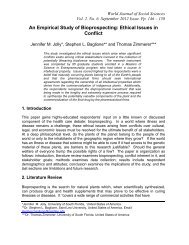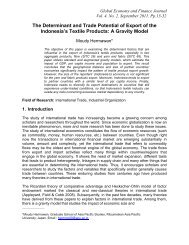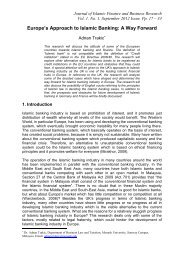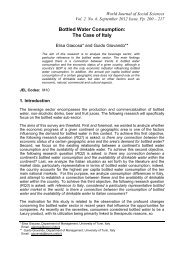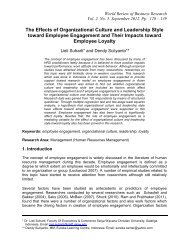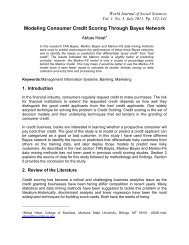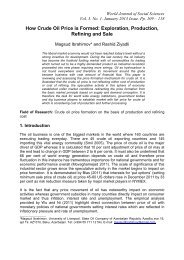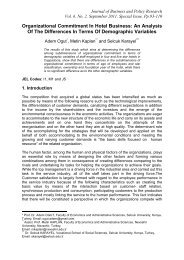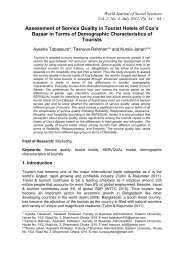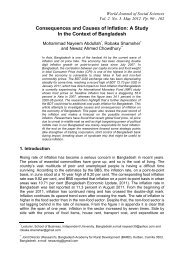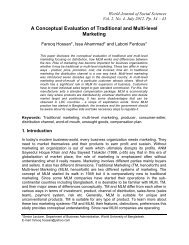Partial Least Square Model for Customer Re ... - Wbiaus.org
Partial Least Square Model for Customer Re ... - Wbiaus.org
Partial Least Square Model for Customer Re ... - Wbiaus.org
You also want an ePaper? Increase the reach of your titles
YUMPU automatically turns print PDFs into web optimized ePapers that Google loves.
2.2 <strong>Customer</strong> <strong>Re</strong>-Patronage IntentionShaari, Nordin & Fong<strong>Customer</strong> re-patronage intention is conceptualized as customer likelihood to revisitservice provider (Hellier et al. 2003). In the post-purchase phase, consumer evaluatesservices and decides whether he/she will develop ongoing relationships with the serviceprovider. There are overwhelming arguments that it is more expensive to win newcustomers than to keep existing ones (Ennew & Binks 1996; Hormozi & Giles 2004).This is in line with Athanassopoulos, Gounaris & Stathakopoulos’s (2001) argument thatcustomer replacement costs such as advertising, promotion and sales expenses arehigh and it takes time <strong>for</strong> company with new customers to become profitable.Furthermore, the increase of retention rate could also imply greater positive word ofmouth (Appiah-Adu 1999), decrease price sensitivity and future transaction costs(<strong>Re</strong>ichheld & Sasser 1990) which would lead to better business per<strong>for</strong>mance (Fornell1992; Bolton 1998).2.3 Effect of Service Quality on <strong>Re</strong>-patronage IntentionStudies and theoretical evidences in literatures suggest that there is direct link betweenservice quality and behavioral intentions (Bitner 1990; Bolton & Drew 1991). Among thevarious behavioral intentions, considerable emphasis has been placed on the impact ofservice quality in determining repeat purchase and customer loyalty (Jones & Farquhar2003). As pointed out by Bolton (1998), service quality influences a customer’ssubsequent behavior, intentions and preferences. When a customer chooses a providerthat provides service quality that meets or exceeds his or her expectations, thecustomer is more likely to choose the same provider again. Other studies whichsupport that repurchase intentions are positively influenced by service quality includeZeithaml, Berry &Parasuraman (1996); Cronin & Taylor (1992, 1994); Cronin, Brady &Hult (2000) and Choi et al. (2004).3. MethodologyA set of self-administrated questionnaire in English with Malay translation wasdeveloped. The questionnaire comprised of three sections. The first section gatheredrespondents’ demographic data, the second on items respective to measure employeeper<strong>for</strong>mance and attitude, and the third on customer re-patronage intention with a fivepointLikert scale ranging from 1 (strongly disagree) to 5 (strongly agree) utilized. 300questionnaires were distributed to respondents who have stayed in three star and fourstar hotels in Kuching, Sarawak. This meets the ratio of observations to independentvariables of minimum 5:1 by Hair et al. (2006) that also fit with Sekaran (2007) thatstates 30 to 500 samples should be sufficient <strong>for</strong> most studies. 267 questionnaires werecollected and found usable, giving a quite good response rate of 89 percent.64



